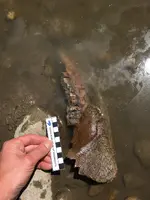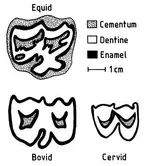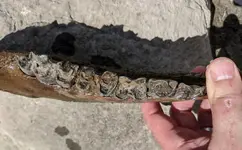sergeir
Greenie
Bison bison or Bos Taurus (cow)? Found on a river gravel bar in Sothern Minnesota. Sediments in the area range from cretaceous to holocoen with a good amount of Wisconsin lobe glacial till. Previously we have found other bison (long bones and teeth), elk, bear, mammoth, and ancient horse...










